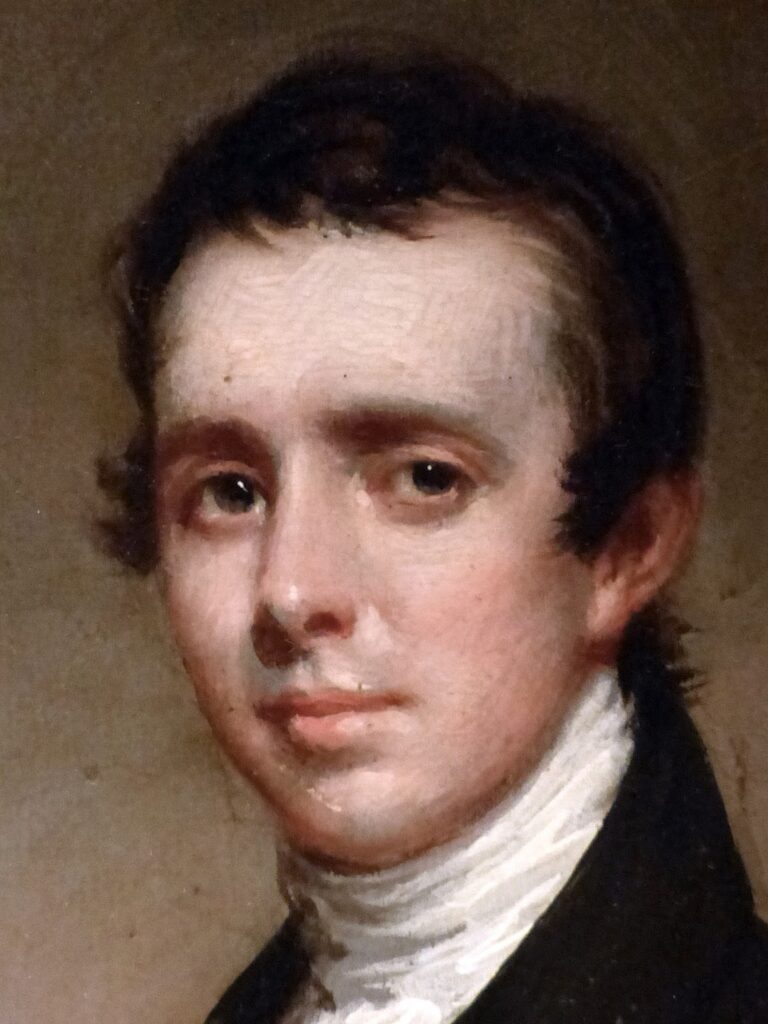
Summerfield/Siloam UMC is named after well-known early 19th century Methodist pastor and preacher John Summerfield. Enjoy this brief summary of his life.
John Summerfield was a distinguished Methodist preacher, known for his remarkable oratorical skills and influence in the early 19th century. Born on January 31, 1798, in Preston, England, Summerfield’s early education was at a Moravian school in London, where he majored in Classics. Despite this strong educational foundation, he experienced a tumultuous period in his youth.
In 1813, Summerfield moved to Dublin, Ireland. Here, he initially led a dissipated life, which led to a period of imprisonment. This dark phase was followed by a time of deep contrition, culminating in his conversion to Methodism in 1817. He quickly became a local preacher the following year, captivating audiences with his sermons and addresses in Ireland and England.
Summerfield’s prowess as a preacher was not limited to the pulpit; his talents attracted immense attention. By 1819, he was drawing large congregations in Dublin and engaged in missionary work. His eloquence and ability to connect with people were widely recognized, and he was seen as one of the most illustrious orators of his time, particularly in America.
In 1821, Summerfield’s life took a significant turn due to severe illness. He moved to New York and was admitted to the Methodist conference of the state. His preaching journey continued in the United States, where he visited cities like Philadelphia, Baltimore, and Washington D.C., always greeted with enthusiasm by large congregations. In 1822, Princeton University recognized his contributions by awarding him an M.A. degree.
His health, however, continued to deteriorate, leading to a severe lung hemorrhage. By 1823, his activities were greatly limited, but he still managed to contribute significantly to religious organizations. He was appointed as a delegate to the Protestant Bible Society in Paris and represented the American Bible Society in England. Upon his return to America, he was appointed to the Missionary Board of the Philadelphia Conference and played a pivotal role in founding the American Tract Society.
John Summerfield passed away at the young age of 27 on June 13, 1825, leaving behind a legacy as a powerful and influential preacher. His life and works were later chronicled by authors such as John Holland, providing detailed accounts of his journey from a troubled youth in Ireland to a prominent figure in the Methodist Church in America.
Siloam, a significant location mentioned in the Bible, is situated south of Jerusalem’s Old City and is steeped in both historical and religious importance.
The Pool of Siloam
Summerfield/Siloam is also named after the Pool of Siloam in Jerusalem.
The Pool of Siloam, central to the area’s significance, was initially constructed during the reign of King Hezekiah (715–687/6 BCE). This was a strategic move to prevent besieging armies, specifically the Assyrians under King Sennacherib, from accessing the waters of the Gihon Spring. The pool was fed by the Siloam Tunnel, a new construction that replaced an older, more vulnerable Canaanite tunnel.
During the Second Temple Period time, the Pool of Siloam was a central feature in the suburb of Acra, also known as the Lower City of Jerusalem. It was the lowest point in altitude within historical Jerusalem and served as a starting point for pilgrims on their way to the Temple Mount. The pool was used for ritual purification before visiting the Temple enclosure, which was a significant aspect of Jewish religious practice.
In the Gospels the Pool of Siloam is the site of one of Jesus’ miracles, where he healed a man blind from birth. This event is significant as the name ‘Siloam’ (Hebrew: Shiloach) means ‘sent’, paralleling the concept of Jesus as the ‘sent’ Messiah. This has led to various interpretations, including the pool possibly being a mikvah (ritual bath), though its size suggests other uses as well, such as a swimming pool or a general freshwater reservoir.
The Siloam Pool’s connection with Jesus’ miracle and its symbolic name have made it a focal point for Christian reflection on Jesus as the sent Savior. This ties into broader theological themes in Christianity about Jesus’ role and mission.
The Pool of Siloam was destroyed after the First Jewish–Roman War in 70 CE. Over time, it was buried under layers of silt. In the 5th century, a new pool was constructed at the end of the Siloam Tunnel by Empress Aelia Eudocia of the Byzantine Empire, but this was not the original Biblical pool. The actual pool from the Second Temple period was rediscovered in 2004 during excavation work for a sewer, which led to uncovering its stone steps and confirming its historical and biblical significance.
The rediscovery of the Pool of Siloam has been a significant archaeological achievement, providing tangible links to biblical narratives and the historical understanding of ancient Jerusalem. The site continues to be a point of interest for both religious pilgrims and historians, offering a unique blend of spiritual heritage and historical inquiry.